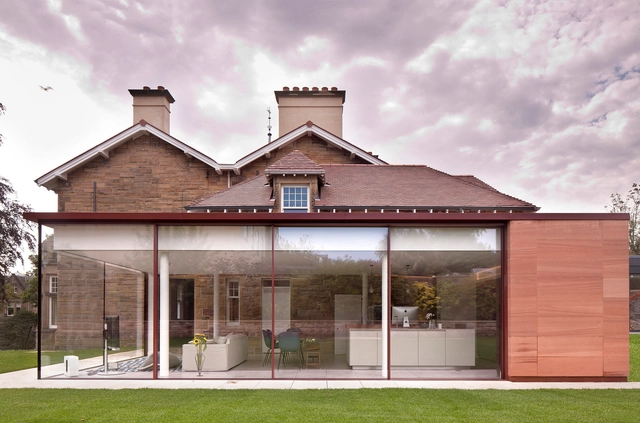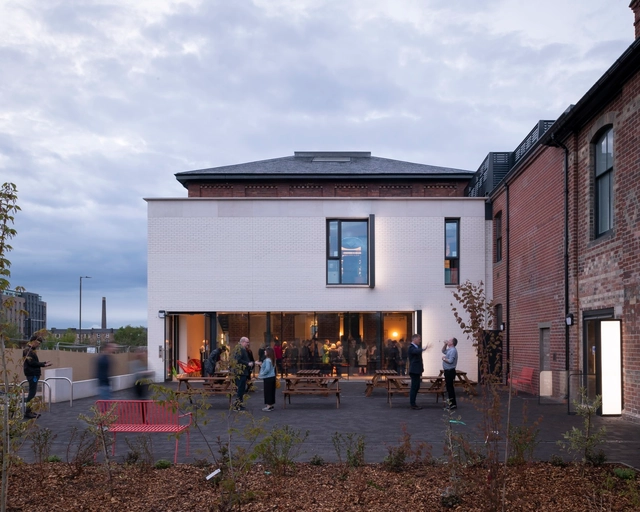
-
Architects: Archer + Braun
- Area: 384 m²
-
Manufacturers: Coast, Strathearn, Umber & Ochre
-
Professionals: Gloss Projects, Simple Works, Ampersand Landscape Construction, The Landscape Lady, Hen and Crask, +1
If you want to make the best of your experience on our site, sign-up.

If you want to make the best of your experience on our site, sign-up.





RIBA and Network Rail recently announced the winner of the Re-imagining Railways design competition, which invited architects, engineers and designers to rethink small and medium-sized train stations to improve the travel experience. The winning design, signed by Edinburgh-based architectural practice 7N Architects, features a reinterpreted clock tower serving as a local landmark and a modular station layout that can be adapted to a variety of sites.


_David_Cadzow_4.jpg?1581282682)


A historic hotbed of architectural styles and a current architectural capital of the world, cities in the United Kingdom are awash with iconic buildings from the Georgian, Neoclassical, and contemporary era. Such buildings, from the Clifton Suspension Bridge in Bristol to the Southbank in London, have come to define the cities in which they stand, drawing the eyes of tourists and designers alike from around the world.
It is therefore an interesting exercise to examine what these cities would look like if such structures didn’t exist. To this end, Neomam Studios has partnered with QuickQuid to produce a series of images demonstrating what six British cities could have looked like, resurrecting some of Britain’s most surprising unbuilt structures.

David Chipperfield Architects have released new details of their proposed IMPACT Centre in Edinburgh, Scotland. Addressing the need for a purpose-built, medium-sized performance venue in a city of profound cultural heritage, the scheme will serve as a base for the Scottish Chamber Orchestra with a main, 1000-seat auditorium.
Situated in Edinburgh’s UNESCO World Heritage Site, the scheme will replace an existing office building to become the first dedicated new space for music and performing arts in the city in 100 years. The scheme seeks to “form an urban composition centered around Dundas House,” a 1771 Grade-A listed civic building whose rear façade abuts the proposed scheme.
_wHY.jpg?1501596121&format=webp&width=640&height=580)
The team led by US-based architects wHY has been selected as the winner of the Ross Pavilion International Design Competition, beating out proposals from Adjaye Associates, BIG, Flanagan Lawrence, Page\Park Architects, Reiulf Ramstad Arkitekter and William Matthews Associates + Sou Fujimoto Architects.
Featuring an international collaboration of architects, engineers and creative agencies – including Edinburgh-based design studio GRAS, Groves-Raines Architects, Arup, Studio Yann Kersalé, O Street, Stuco, Creative Concern, Noel Kingsbury, Atelier Ten and Lawrence Barth – the team envisioned a rolling terrain for the West Princes Street Gardens site that the jury lauded as both exciting and respectful of its historic setting.


Detailed visions of the concept designs from the seven shortlisted teams in the running for the new Ross Pavilion (named for William Henry Ross, the former chairman of the Distillers Company) have been released. Following the announcement of the competition earlier this year—in which the likes of Adjaye Associates, Bjarke Ingels Group, Sou Fujimoto Architects and Reiulf Ramstad Arkitekter were placed in the running alongside local practices, such as Page\Park—the sensitivity and level of restraint behind the majority of the proposals demonstrates the public and national significance of the site, which sits at the heart of the Scottish capital of Edinburgh.

The Ross Development Trust in collaboration with the City of Edinburgh Council and Malcolm Reading Consultants has launched a global search for an outstanding team of architects, landscape designers, engineers and other specialists for the new circa £25m Ross Pavilion and Gardens project in the heart of Edinburgh.
The Ross Pavilion International Design Competition will award the commission to regenerate and renew an emblematic site at the heart of West Princes Street Gardens, which is presently occupied by the Ross Bandstand.